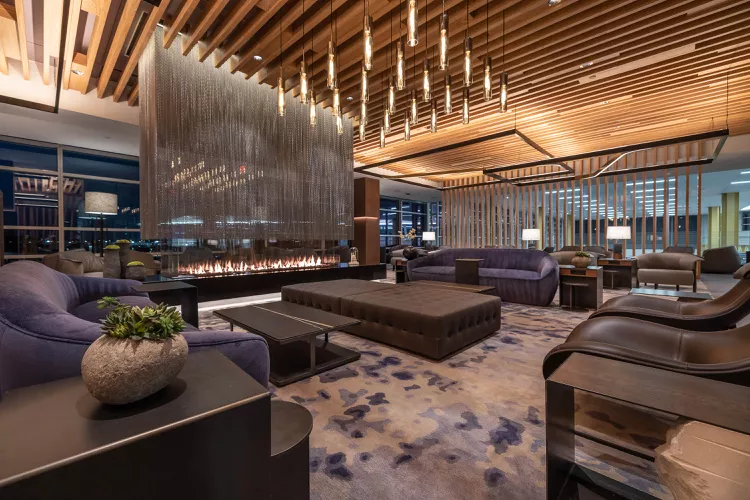Summary
A beginner’s guide to airline elite status — from an expert.
There’s no question about it: Airline elite status can significantly enhance the travel experience. Between aspirational perks like coveted first-class upgrades and more practical benefits like free checked bags, status can tangibly make air travel better.
In 2023, the world of airline status has reset with airlines returning to business as usual after three years of easier earning amid the pandemic. If you’re fortunate enough to have status for the first time, here’s how to leverage the perks that other travelers often envy, from pre-departure to post-flight.
Understanding Airline Elite Status
Contrary to popular belief, airline elite status isn’t only beneficial for frequent business travelers and big spenders with the highest tiers. While upgrades may be less common among fliers with lower status tiers, any type of elite status can tangibly make a travel day significantly more enjoyable (or, at least, more tolerable).
Breaking Down the Status Levels
Each airline has its unique status levels and naming conventions. However, there’s a common thread that unites them all: as you fly (or spend) more, you earn more perks. For instance, each of the major U.S. airlines — Alaska Airlines, American Airlines, Delta Air Lines, and United Airlines — offer four distinct status levels with increasing benefits as you climb the ranks.
- Alaska: MVP, MVP Gold, MVP Gold 75K, MVP Gold 100K
- American: Gold, Platinum, Platinum Pro, Executive Platinum
- Delta: Silver Medallion, Gold Medallion, Platinum Medallion, Diamond Medallion
- United: Premier Silver, Premier Gold, Premier Platinum, Premier 1K
While budget-focused carriers, such as JetBlue and Southwest, have fewer differentiated status levels that are easier to earn, they don’t offer perks such as the coveted seat upgrades available on the major airlines.
What Travel Perks Should I Expect?
With airline elite status, expect a variety of benefits at the airport, on board, and even at home.
At the Airport
Use your newfound elite status for free checked bags, expedited check-in, quicker boarding, and fast-track security lines. (Tip: If you have TSA PreCheck or CLEAR, using those privileges can often be faster than waiting in the priority security line.)
Should your travel plans change, many airlines also offer free same-day flight changes or standby privileges for elite status members. And once at your arrival airport, checked bags should make it to the baggage claim carousel before others’ luggage.
On Board
On most U.S. airlines, elite passengers booked in economy get complimentary access to more desirable seats, such as preferred rows at the front of the plane or exit row seats. Status holders will also be added to an exclusive upgrade list for extra-legroom economy, first-, or business-class seats.
Passengers with the highest status levels, such as Executive Platinum on American Airlines, even get a free alcoholic beverage and snack while seated in economy. On some international airlines (a notable example being Hong Kong-based Cathay Pacific), top-tier elites in economy are personally greeted by the crew, given a welcome bottle of water, and offered the first choice of meal.
At Home
Thanks to dedicated phone lines for airline elite status members, wait times to get customer support are significantly reduced compared to non-elite travelers. Status holders should also expect to see extra miles after flying. For instance, those with American’s Executive Platinum status get a 120 percent mileage bonus on purchased tickets.
How Can I Use My Airline Status for an Upgrade?
Upgrades from economy to the next class of service are highly coveted perks. Although airlines handle upgrades differently, major carriers like Alaska, American, Delta, and United all reward their most frequent fliers with complimentary, space-available first-class seats on domestic routes.
Typically, to get a free upgrade, you simply need to include your frequent flier number in the reservation. The upgrade process, including landing on the exclusive upgrade list, automatically happens behind the scenes. However, since the waitlist for upgrades is prioritized based on status level, the higher your status tier, the higher your odds of scoring a first-class seat.
Tip: Consider flying less popular routes or flying at non-peak times if upgrades are important to you. For instance, instead of flying on Friday afternoon, you might consider a Saturday evening flight that may be more empty (and less elite-passenger heavy).
How Do I Work to Qualify for Status Next Year?
As you continue to fly (and spend) throughout the year, travelers have the opportunity to requalify and level up their existing status. Most airlines tally their elite status criteria over the course of a calendar year. If you hit the minimum threshold, you’ll automatically become an elite member for the remainder of the year in which you qualified — plus all of the following year.
Insider Tip: If You’re Considering Another Airline, Try Status Matching.
If you’re already loyal to one airline but considering switching your alliance, look into a status-match program. These temporary offers allow travelers to test the differences between elite programs, typically without having to spend a year accruing miles and qualifying dollars.
With any airline elite status, it pays to ask yourself which perks you’re most interested in. Many status benefits, such as extra-legroom seats or a free checked bag, might come as a benefit of a credit card you already have in your wallet. So, consider what you really want out of your flight experience, and the best method to get it — whether that’s keeping up your status year after year or exploring other options.





